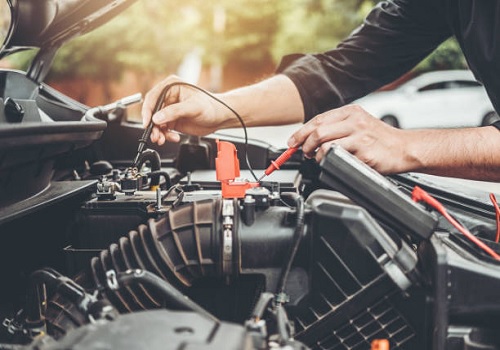EV sector's 2.0 transition sees slew of upgrades, but subsidy dependence stays

Follow us Now on Telegram ! Get daily 10 - 12 important updates on Business, Finance and Investment. Join our Telegram Channel
In the Indian automotive sector, the electric vehicle segment seems to be the happening one with traditional EV makers and newer ones jumping in with great vigour.
So much so, the Chennai-based conglomerate Murugappa group that had launched and closed production and sales of electric two-wheelers several years back -- through BSA Motors -- has re-entered the EV segment.
The group's flagship company Tube Investments of India Ltd through its subsidiary TI Clean Mobility has announced the launch of its electric passenger three-wheelers. The company has also announced its plan to launch electric tractors and trucks.
While the traditional internal combustion engine petrol/diesel powered vehicle makers are also getting into the game, the Indian EV sector is populated with several new players with some having huge production capacities.
Can the Indian EV sector be called Version 2.0? A decade back there were EV scooter makers who were assembling the imported kits. The sector then was mainly driven by government subsidies, as it is today.
As in the past, the industry is driven by government subsidies and the country is import dependent for lithium ion batteries, rare earth magnets and others.
The change now is that the two wheelers -- scooters and motorcycles -- are much faster and have longer range per charge and there are electric three/four wheelers, buses being rolled out by the manufacturers.
Industry observers, however, differ on the Version 2.0 point.
"There is a vast difference in the sector now as compared to a decade back. Apart from the vehicle makers, there are now companies that make lithium-ion cell/batteries, motors, controllers and others. The vehicles are now being designed in India. A decade back the options were limited but now the options are many," a couple of industry observers told IANS preferring anonymity.
"Earlier the electric two-wheelers were charged only at homes. Now the charging infrastructure is coming up with several players coming into the sector," they added.
But what has not changed is that the industry is now, as in the past, subsidy driven. Without the government subsidy it will be an uphill task for the players to show a prospective EV buyer a compelling reason to buy.
Extension of the Faster Adoption and Manufacturing of (Hybrid &) Electric Vehicles in India - II (FAME II) subsidy scheme and rationalisation of GST are some of the budget wishes of the electric vehicle makers, said CARE Ratings as per its survey.
According to the survey, the electric vehicle makers want the FAME II subsidy scheme to be extended beyond March 2024 and also to bring the commercial vehicles under it.
After the momentum witnessed in electric vehicle adoption in 2022, it will be critical for the government to continue to support the adoption so that it will go over the tipping point and the momentum doesn't die out, said Anirudh Ravi Narayanan, CEO, Bharat New Energy Company that rolls out electric two- wheelers.
"First, a continuation of the FAME II subsidy or introduction of a FAME III subsidy will greatly benefit the adoption. If this subsidy were to be abruptly discontinued in 2024, it will create a demand shock in the market," Narayanan added.
As per the CARE Ratings survey, the manufacturers want tax rates to be lowest for electric vehicles and also include small/medium-size/start-up players contributing to the electric vehicle ecosystem under the Production Linked Incentive (PLI) scheme.
According to Narayanan, India can become globally competitive and the electric vehicle export market could develop soon.
"To support this, it is recommended that duties for items that unavoidably need to be imported (such as cells, rare-earth magnets, semiconductors) be dropped to zero until local capacity develops. Without this, China will have a cost advantage over India in global markets. Also, extension of PLI benefits for SKD/CKD assemblies - and not only full vehicles - would also be very beneficial," Narayanan said.
According to the Society of Manufacturers of Electric Vehicles (SMEV) a total of 18,41,622 EVs have been sold in India since 2017-18. The bulk of the sales was accounted for by two- wheelers with 874,993 units and three-wheelers with 897,792 units. Four wheelers accounted for 65,494 units and buses for 3,343 units.
Industry observers said the industry is in a state of flux with sales picking up due to incentives and coming down due to EVs going up in flames and again picking up.
"The states have now increased the power tariffs which in turn will narrow the economic benefit of buying an EV as compared to oil powered vehicles. And without the subsidy, there is no compelling reason for a buyer to go for an EV," T. Murrali, an industry observer, told IANS.
The other interesting issue is that the fast charging technology which is available for four wheelers is not there for the two-wheelers where the bulk of the sales happen, observers added.
If battery swapping gains acceptance then the vehicle's initial and operational cost will come down as vehicle owners will be paying only for the battery power consumed.
In a presentation to a Parliamentary Committee the SMEV said with supportive policies 80 per cent of the two-wheelers can become electric by FY30.
The SMEV also said the subsidies can be tapered off after FY27 as the momentum would be enough to sustain growth.












 320-x-100_uti_gold.jpg" alt="Advertisement">
320-x-100_uti_gold.jpg" alt="Advertisement">












